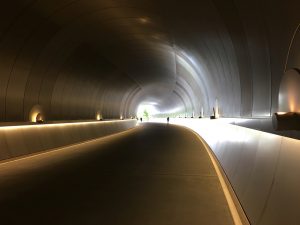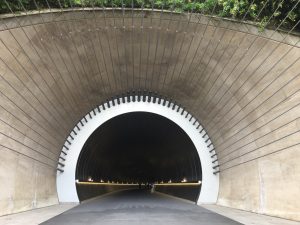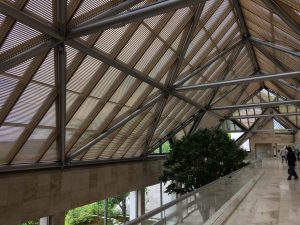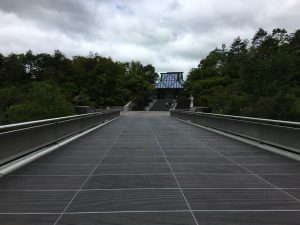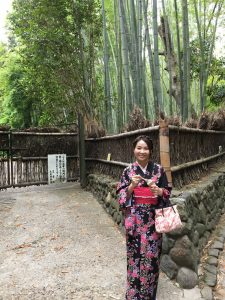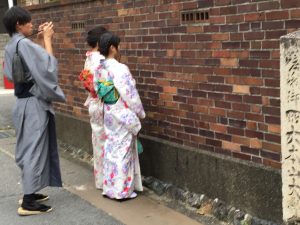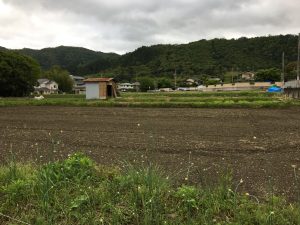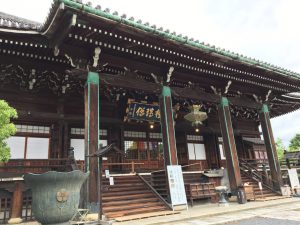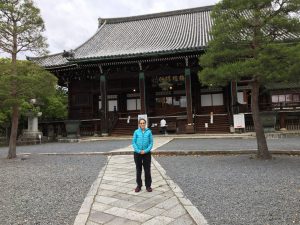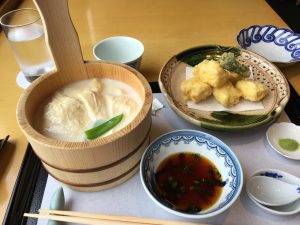When my son Liam spent some time in Japan in 1999, one of his most memorable experiences was visiting the Miho Museum outside Kyoto. This museum, designed by I.M.Pei, requires a train trip and then a 50 minute bus trip into the hills before reaching the museum reception area — and from there it is entering another world, through an very modern tunnel structure and into a small but world class collection of fie art, from Egypt to Rome to Persia and China.
The special exhibit in the Japanese art space was an extensive collection of Noh masks with well-done descriptions of the related history and meaning. The building was designed around the permanent collection with great thought and planning and the result is an exceptional space.
We were told by a later guide that because this museum was founded and funded by the heirs of the nichiren religious sect, it is not promoted in tourism materials for sectarian reasons. For this reason, and due to cost of getting here and entry, there are few Japanese tourists and most tour groups do not take the time to come here. There is a video in the museum showing I.M.Pei sitting with the funder.
I note here that the tourist world is greatly changing in Japan. I had been to the famous bamboo groves of Arashiyama on an earlier visit when the cool green stalks whispered and swayed along the quiet walkway. When Claudia and I took a train there one afternoon this week, the area was shoulder to shoulder with tourists, mainly from China and Taiwan. And everywhere now, wherever there are tourists, there are stands for soft-serve vanilla and green tea ice cream. Claudia, Ginny, and Pat when she was here, all indulged in this treat on a daily basis. This tourist influx is good for the economy but makes it hard to have a truly satisfying experience (unless your goal is ice cream).
We were told that almost all the young women and some young men in kimono were from China or Taiwan, dressed up for the day. He said it was obvious by the way the women walked.
Outside the bamboo area, Claudia and I found the remnants of an earlier time, small shops selling handicrafts, interspersed with a temple or small shrine, and occasionally a well-tilled field with green leafed sprouts along straight rows. But this was already the late afternoon and this is low-season for visitors.
Along our several hour walk in the hills of Arashiyama we would come across some unexpected surprise, such as an old Shinto shrine, or a large temple complex around a corner. One of the great delights about wandering in Kyoto.
I came to realize on this trip that only a small part of the spectrum of Japanese cuisine has been imported into the U.S. Near our hotel, there are several small streets and alleys filled with small restaurants, each one serving a different kind of cooking: charcoal broiled foods, steam pots, Japanese filled omelettes, yakitori, separate soba and udon restaurants, pork cutlet restaurants, beef and vegetables, sushi (of course), tofu restaurants and yuba restaurants, to name a few (I really enjoyed the last two listed). We all had a great gyoza dinner together one evening and on another a collection of foods featuring namayuba, among other things. We have been eating very well, including all you can eat breakfast buffets. There are fast food restaurants with bright lights and neon signs outside and then on the other end of the spectrum there are the very refined spots, with a bamboo tree outside and a discrete sliding soji-screened door with the name only in Japanese. We figured if there was no English at all outside, even the name, they did not really want English-speaking tourists. It has all been interesting.

